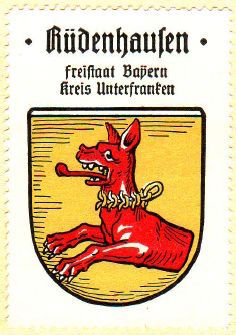
With the popularization of genealogy, and DNA kits like, “23 and Me,” the study of heraldry is catching a second wind as people research their genetic origins and family tree.
Not to get too far afield from our real topic – dogs – but heraldry really “caught on” during the Middle Ages when knights painted personal designs on their shields and clothes to help fully armored allies identify them on a battlefield. Over time, the clergy, noble families, and even towns and organizations adopted coats of arms, and by the mid 13th century, a system of fixed rules and designs was firmly in place, along with a method of describing heraldic designs in words called “blazoning.”
There was all manner of heraldry, from ecclesiastical and educational heraldry, to crests that represent countries, families, and individuals, and each color and design element on a herald meant something. The presence of fur on a shield or crest, for example, implied dignity, while the use of the color orange (called “sanguine ” in heraldic terms) symbolized patience in battle, but victorious.
German heraldry was developed comparatively late, and unlike its British counterpart, German heraldic design made little use of furs or pattern repetition, but it was big on the use of beasts. All the German states had (and still do) coats of arms, but back in the day, political divides saw the heraldic eagle and lion come to represent the two most political powers in Germany at the time, the house of Hohenzollern and the house of Welf, respectively.
Dogs (finally, we get to the dogs) were also popular design elements, and the Germans used three variants: The Windhund (a Greyhound), the Bracke (a German scenthound) and the Rüde (a male dog). How these dogs were positioned on the shield also had signicance. The dog could be sejant (sitting), salient (its hind feet on the ground), passant or trippant (a dog walking upright like a human), skipping, or courant (running). Dogs were often shown collared or gorged (their throat surrounded by a coronet or something else).
A complete guide to heraldry is now available on-line through the Gutenberg project, a wonderful primer for anyone thinking about investigating their own family’s crest.
Image: A gorged (wearing a gold collar floating red Rüde as it appeared on the arms by Hupp in the Kaffee Hag albums
